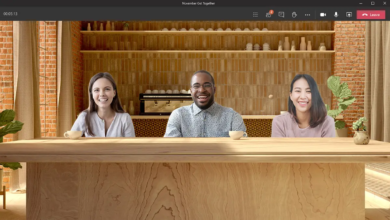How to Use AI to Setup an Ergonomic Workspace for Free

In today’s world, where more of us are spending extended hours at our desks, having an ergonomic workspace isn’t just a luxury—it’s essential. However, setting up an ergonomic workspace can feel daunting, especially if you’re on a budget. Fortunately, artificial intelligence (AI) is making it easier (and cheaper!) to create a healthier work environment, often at no cost. By tapping into free AI-driven tools, you can gain insights on how to set up your workspace to minimize discomfort, enhance productivity, and avoid common issues like back pain or eye strain.
Here’s a step-by-step guide to using AI to set up an ergonomic workspace for free.
What is an Ergonomic Workspace?
An ergonomic workspace is one designed to support the body in a neutral posture, reducing strain on muscles and joints during long hours of work. From desk height and chair support to lighting and monitor placement, ergonomics makes each element in your space work harmoniously for comfort and efficiency.
Using AI to optimize ergonomics means you can quickly access personalized suggestions, gain insight into posture, and adjust your setup without needing costly equipment or a professional consultant.
Read More : Generative AI in Fintech: Top 5 Use Cases and Real-World Examples
How AI Can Help You Achieve an Ergonomic Workspace for Free
AI is rapidly evolving in the realm of health and wellness, and many free applications can help you improve your work environment. Let’s look at some popular free tools and techniques.
Posture Analysis Apps
Several AI-powered apps can analyze your posture through your device’s camera. These tools detect body alignment and posture issues in real-time and provide corrections.
- Apps like Gaze (Android/iOS) use AI to track your posture and alert you if you slouch or lean excessively.
- Posture reminders: These apps can prompt you to sit straight, stretch, or take breaks.
AI-Based Lighting Optimization Tools
Lighting is a critical part of ergonomics. Poor lighting can lead to eye strain, headaches, and decreased productivity. Free AI tools can adjust your screen brightness or suggest optimal lighting settings.
- f.lux: This AI-driven software adjusts your screen’s color temperature based on the time of day, reducing blue light exposure in the evening, which can strain the eyes and affect sleep quality.
- EyeCare: AI can measure the ambient light in your room and suggest changes for ideal screen brightness.
Virtual AI Desk Setup Assistance
Some AI apps can act as virtual interior designers, providing insights on how to arrange your desk for optimal ergonomics.
- Room Planner: This AI-driven tool lets you experiment with virtual setups to figure out ideal placements for monitors, chairs, and other workspace essentials.
- IKEA Place: This free app uses augmented reality and AI to let you see how different desk setups might work in your space.
Monitor Distance and Height Checkers
Using the right monitor height and distance reduces strain on the neck and eyes. AI tools can help you adjust them without special equipment.
- Measure App: Many smartphones have a free Measure app that uses AI to help you find the best distance and height for your monitor relative to your seating position.
- Posture AI: Apps that use AI to monitor head tilt can also help identify if your monitor is too high or low based on how much you’re tilting your neck to look at it.
AI for Desk Height and Chair Positioning
The optimal desk height depends on your body measurements, and sitting position affects posture. AI can assist with virtual measurements, ensuring your desk and chair are adjusted to fit you perfectly.
- Google Measure App (iOS and Android): This AI tool allows you to measure the height of your desk and adjust accordingly based on ergonomic standards.
- MyFitnessPal and other wellness apps: Track your sitting time and recommend adjustments for breaks and stretching based on the hours spent sitting.
Voice Assistants for Reminders
Voice assistants powered by AI, like Google Assistant, Alexa, or Siri, can serve as ergonomic assistants, reminding you to take breaks, stretch, or drink water.
- Set reminders for stretch breaks every 30 minutes to prevent strain and stiffness.
- Use AI skills like “Move Reminder” on Alexa to get customized stretching recommendations.
Ergonomic Keyboard and Mouse Setup Guides
AI can guide you on the optimal positioning for your keyboard and mouse, reducing the risk of repetitive strain injuries.
- Typing Tutor apps like Keybr use AI to analyze your typing technique and suggest ergonomic typing adjustments.
- Hand position apps: Tools that provide visual guides on screen can show you how to position your hands and mouse in a more comfortable position.
AI-Powered Exercise and Stretching Reminders
Sitting for prolonged periods can lead to fatigue, muscle stiffness, and other physical issues. AI apps provide customized exercise routines and reminders to stay active.
- Stretchly: A free, open-source break reminder app that suggests stretches and exercises for your back, neck, and wrists.
- Fitbit Coach Free Tier: Provides AI-driven exercise suggestions that can be done at your desk, keeping you active without disrupting your workflow.
Posture-Correcting Webcam Apps
Using your computer’s camera, AI-powered tools can provide real-time posture feedback. These apps are ideal for those who tend to work in front of a screen for hours.
- ErgoEye: A browser extension that uses your webcam to track posture and reminds you when adjustments are needed.
- PostureMinder: AI assesses your sitting posture and alerts you if you’re leaning too far forward, sitting too low, or exhibiting other unhealthy postures.
Read More : The Sleep-Mental Health Equation: Insights into a Restorative Relationship
AI Tools for Reducing Screen Time
Screen fatigue is common in today’s work-from-home culture. AI tools can help you track your screen usage and limit exposure to reduce eye strain and mental fatigue.
- StayFocusd (Chrome Extension): AI-powered to limit time on certain websites, helping you reduce screen time and avoid digital fatigue.
- RescueTime: A time-tracking tool that helps you monitor your computer use and take more breaks.
Conclusion
An ergonomic workspace doesn’t have to cost a fortune. By harnessing the power of free AI tools, you can create a setup that not only enhances comfort but also supports long-term wellness. These AI-driven solutions are easy to implement and can be customized to suit your specific needs, helping you to reduce strain, increase productivity, and enjoy a healthier work experience. Embrace these tools, and you’ll be well on your way to a comfortable and efficient workspace without spending a dime.
Common FAQs on Setting Up an Ergonomic Workspace Using AI
- What is the best posture for working at a desk?
Aim to sit with your feet flat on the ground, knees at a 90-degree angle, and monitor at eye level. AI tools like ErgoEye can provide real-time feedback on your posture. - How far should I sit from my computer screen?
Your screen should be about an arm’s length away, with the top of the screen at or slightly below eye level. Apps like Measure or ErgoVision can help you determine the right distance. - What lighting setup is ideal for reducing eye strain?
Natural light is best, but avoid direct glare on your screen. AI tools like f.lux adjust your screen’s light based on the time of day to match natural lighting conditions. - How often should I take breaks when working on a computer?
Experts recommend taking a 5-minute break every 25-30 minutes. AI reminders from Stretchly or Google Assistant can prompt you to move regularly. - Are there AI apps for wrist and hand ergonomics?
Yes, apps like Keybr and PostureMinder provide real-time feedback on wrist positioning, ideal for reducing strain during long typing sessions. - Do AI tools require special equipment for ergonomic adjustments?
Most AI tools use your smartphone, computer, or built-in cameras to analyze your environment, making them accessible and affordable.










